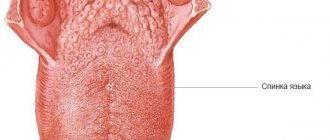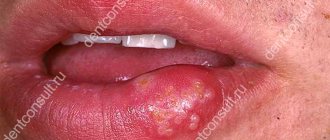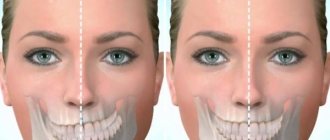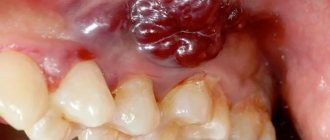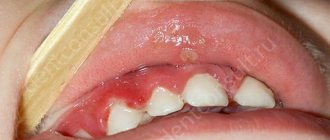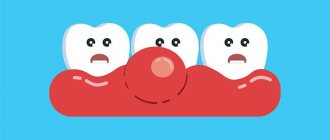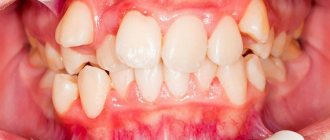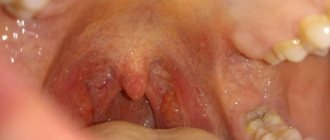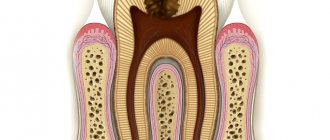Cheek cancer is a malignant neoplasm of the oral cavity.
Examination of patients with symptoms of cheek cancer at the Yusupov Hospital is carried out using modern diagnostic equipment from leading companies in the USA and European countries. Oncologists provide comprehensive treatment for cancer of the buccal mucosa. The medical staff is attentive to all the wishes of the patient. Chefs provide special dietary meals. Professors and doctors of the highest category develop tactics for managing patients with cheek cancer at a meeting of the expert council. Early diagnosis of the disease and multidisciplinary therapy improve the prognosis and five-year survival of patients after treatment.
Causes of cheek cancer
Cancer of the buccal mucosa develops under the influence of the following provoking factors:
- Use of tobacco in any form (cigarettes, cigars, pipes, chewing tobacco);
- Alcohol abuse (the risk of developing cancer increases when the use of alcohol and tobacco is combined);
- Infection with carcinogenic forms of human papillomavirus.
One risk factor is exposure to sunlight. Both family history and genetic predisposition, as well as exposure to mutagenic environmental factors, play a role in the development of cheek cancer. The formation of a malignant tumor occurs in several stages. The most important is the disruption in the functioning of oncogenes and genes that inhibit tumor growth. The development of malignant neoplasms of the cheek is associated with inactivation of the p16 gene, mutations in the p53 gene, and the introduction of the human papillomavirus.
Photos "before" and "after"
The result “before” and “after” correction of the oval face and jowls. Surgeon: Vasiliev Maxim.
The patient came to the clinic for a swollen oval face, sagging cheeks, and shaved hair. A medial corset platysmaplasty and neck lift with a cosmetic incision behind the ear were performed. Result: a clear jaw contour, a straight and toned neck, a young and sharp cervical-chin angle. Surgeon: Vasiliev Maxim.
Neck lift using dynamic platysmoplasty - the chin will not sag even when tilted. Result 10 hours after surgery. There is swelling and markings. Surgeon: Vasiliev Maxim.
The patient was concerned about age-related excess skin in the neck area and was not ready for radical intervention. Surgeon Vasiliev Maxim performed a thread chin lift “NAS lift” (NAS lifting).
“Before” and 10 days “after” rhinoplasty (surgeon Mkhitar Meloyan) and removal of Bisha lumps (surgeon Andrey Iskornev). The lower third of the face stretched out, the heaviness of the cheeks went away. The face looks lighter and more harmonious.
Laser nanoliposuction of the chin, modeling of the face with one’s own fat, thread lifting of the lower third of the face according to the method of A. Iskornev. Before and 4 days after the procedure.
Completed by: Vasiliev Maxim.
The mechanism of development of cheek cancer
Malignant tumors of the cheek occur against the background of precancerous changes in the epithelial and subepithelial layers (leukoplakia or erythroplakia). The risk of leukoplakia degenerating into invasive cheek cancer is about 4-6%, with erythroplakia it reaches 30%. Subsequently, dysplasia transforms into “cancer in situ”, which penetrates into surrounding tissues and metastasizes to local and regional lymph nodes.
In some patients, even those cells that do not initially raise suspicion of dysplasia upon initial microscopy may gradually become malignant. As the tumor process progresses, distant metastases occur in the bones, lungs, and liver. Buccal cancer can grow through the skin.
What else can cause neoplasms?
Bumps on the cheek can form simply out of nowhere or can be caused by various factors. Usually occurs in people for a number of the following reasons:
- Due to hormonal imbalance.
- As a result of mechanical injury.
- Against the background of viral infections.
In addition, they can act as symptoms of the following diseases:
- A person has skin fibroids.
- Presence of purulent granuloma.
- Presence of dermatitis or seborrheic keratosis.
- Against the background of soft tissue sarcoma.
- If the patient has a xanthoma or basal cell carcinoma.
In any case, it is extremely difficult to identify on your own what exactly could have influenced the appearance of a lump in the mouth on the cheek, unless it is provoked by visible factors in the form of, for example, insect bites. Now let’s figure out what symptoms accompany the pathology.
A photo of a bump on the cheek is shown below.
Symptoms of cheek cancer
Cheek cancer in the initial stages of the tumor process is asymptomatic. Any ulcer that is not prone to rapid healing and any area of hyperkeratosis should be regarded as an early stage of cancer. In the early stages of cheek malignancy, there is little or no pain. As the size of the cancer tumor increases, the following symptoms appear:
- Pain;
- Induration and infiltration of underlying tissues;
- Enlargement of regional lymph nodes, including damage to the lymph nodes of the submandibular triangle, jugular-digastric group and deep cervical lymph nodes.
What does cheek cancer look like? Any non-healing oral mucosal ulcer should be assessed as a potentially malignant tumor and consultation with an oncologist should be sought.
Clinical picture
The specific type of growth occurring on the inside of the cheek can be determined by evaluating symptoms.
Papillomas are often multiple in nature. The clinical picture of such growths depends on their location. Common symptoms characteristic of papillomas include:
- no pain ;
- rough surface of the neoplasm;
- presence of a leg;
- light pink shade.
Some papillomas reach large sizes, thereby interfering with the process of chewing food. With each bite, the patient damages the tumor, which leads to bleeding in the oral cavity. Regular injuries contribute to the growth of the growth.
Why can our articles be trusted?
We make health information clear, accessible and relevant.
- All articles are checked by practicing doctors.
- We take scientific literature and the latest research as a basis.
- We publish detailed articles that answer all questions.
When papilloma simultaneously affects the mucous membranes of the cheeks and larynx, the patient experiences:
- problems ;
- change in voice (wheezing appears);
- difficulties with diction;
- attacks of suffocation if papillomas reach large sizes and block the airways.
The following symptoms indicate damage to the tonsils:
- edema;
- sensation of a foreign body in the throat;
- hoarse voice;
- problems ;
- difficulty eating .
The development of papillomas on the tongue is accompanied by the appearance of:
- ulcers;
- bleeding.
It is important to note that papillomas very rarely degenerate into malignant tumors. This transformation is possible due to the use of chemical drugs in the treatment of neoplasms.
The surface of the lump caused by injury has a red or purple tint. In addition, such neoplasms are distinguished by their convex shape. This lump is characterized by severe pain. It often bleeds.
The lipoma is small in size. It rarely reaches three centimeters in diameter. Its development is not accompanied by the appearance of unpleasant symptoms. The only sign indicating the presence of a lipoma in the oral cavity is a characteristic spherical neoplasm of a dense structure.
Atheroma has a rounded shape and a colorless shell. As it grows, it reaches 10 cm in diameter. When palpating the atheroma, no pain occurs, but the neoplasm begins to move under pressure. In advanced cases, the patient experiences a number of side effects:
- pain syndrome;
- suppuration in the affected area;
- formation of a focus of inflammation;
- increase .
You can distinguish a mucocele from other seals on the mucous membrane by the appearance of this neoplasm: it has a red or blue tint. This growth does not cause pain. The mucocele is soft to the touch, and its interior is filled with fluid. The tumor can open on its own, which can lead to the spread of infection throughout the body.
The cancer most often occurs under the jaw or near the ear. The pathology of the salivary gland is characterized by the appearance of numbness, which occurs when pressure is applied to the facial part of the head in the affected area.
The development of a cancerous tumor is not always accompanied by pain. It occurs when a tumor compresses the trigeminal nerve. In such circumstances, the patient experiences severe pain that radiates to the tonsils.
The clinical picture of a cancer tumor depends on the stage of development of the latter. At the initial stages, due to the presence of a malignant tumor, the functioning of the facial muscles worsens.
Diagnosis of cheek cancer
If a tumor of the mucous membrane of the cheek is suspected, oncologists at the Yusupov Hospital conduct an examination using a mirror, palpation of the tumor and lymph nodes. If a long-term non-healing ulcer is detected, a biopsy is performed. If a negative result of histological examination of the material obtained during the biopsy is obtained, the suspicion of the malignant nature of the tumor remains, the biopsy is performed again.
Oncologists clarify the stage of the tumor process, assess the extent of spread of the malignant tumor from the buccal mucosa to adjacent tissues, and find out whether there are metastases to regional lymph nodes and distant organs. If the presence of metastases is suspected, computer and magnetic resonance imaging, ultrasound, and scintigraphy are used. Distant metastases are found in 20% of patients at the time of diagnosis.
Computed tomography and magnetic resonance imaging make it possible to assess the condition of the deeper anatomical structures of the oropharynx and surrounding tissues. If there is a suspicion of metastases to the lymph nodes or tumor infiltration of the floor of the mouth, a cytological examination of the aspirate obtained under ultrasound guidance is performed. To exclude distant metastases, a chest x-ray in two projections and an ultrasound examination of the abdominal organs are done.
Considering that the prognosis for cheek cancer is serious, a tomography of the neck, chest and upper abdominal cavity is performed. Using bone scintigraphy, I exclude bone metastases. Positron emission tomography allows one to identify the source of metastases in cases of undetected primary tumors.
Follicle
In the event that the growth is an ordinary follicle, then it can be eliminated with the help of antifungal medications or through the use of antibiotics. The main task is to prevent further spread of infection. It is worth noting that if follicles are treated incorrectly, deep scars sometimes form on the dermis that cannot be eliminated on their own.
Treatment for cheek cancer
Malignant tumors are successfully cured using radical radiation therapy while preserving the function of the oral cavity. Radiologists implant radiation sources because it is possible to irradiate a small volume of tissue at a high dose. Radioactive isotopes of cesium, gold, radium, iridium, tantalum, which have the same efficiency, are used as sources.
For small tumors, the size of which does not exceed 1 cm, they are limited to implantation of a radiation source, without resorting to additional external influence. In cases of slightly larger tumors that are not suitable in size for implantation, external irradiation is used along with source implantation.
Traditionally, large cheek tumors are treated with external beam radiation. Recently, oncologists have been using a combination of radiation and chemotherapy. Mobile lymph nodes are radically excised. During prophylactic removal of lymph nodes without signs of damage, in a significant number of cases, foci of micrometastasis are found in them. For this reason, radiologists prefer to perform prophylactic irradiation of the neck in patients without evidence of lymph node involvement by the external beam, sometimes in combination with surgical treatment.
After surgery for cheek cancer, a cosmetic defect is formed. The results of surgical intervention are improved using the technique of microvascular free skin grafting. If a patient develops dry mouth after radiation therapy, he is prescribed oral pilocarpine. The drug increases salivation, which is usually accompanied by minor side effects - sweating and increased urination. For primary or secondary treatment of tumors of the buccal mucosa, patients are prescribed chemotherapy drugs.
Early diagnosis of a cheek tumor allows for effective treatment. If the tumor process is at a late stage, the prognosis worsens. If you experience unpleasant sensations in the oral cavity or identify ulcers of the buccal mucosa, undergo an examination at the clinic by calling the Yusupov Hospital.
Inflammation of the salivary gland
The appearance of a ball or cyst on the cheek inside the oral cavity can occur as a result of infections or injuries to the salivary gland. The Stenon duct (located near the human ears) is blocked by a plug consisting of organic particles - bacteria, blood, pus.
A person experiences a noticeable deterioration in health, one of the manifestations is the growth of a lump. When touched, her body has a soft structure; manipulation is not accompanied by pain. Such a pathological process cannot be left without medical attention.
After confirming the diagnosis, the patient is prescribed treatment - antiseptic treatment of the internal surfaces of the mouth, antibiotic injections (intramuscularly or into the salivary gland itself) or surgery to restore the salivary duct.
How to tighten jowls surgically
If jowls appear on a “heavy” face against the background of large excess skin, the methods listed above will give a weakly expressed aesthetic effect. In this case, the face can only be modeled using surgical lifting.
Platysmoplasty and SMAS lifting will help tighten the jowls on the face. During the operation, the tissues are moved to their previous, youthful position and securely fixed. Excess skin is removed. In the muscle-free area of the lower jaw, the surgeon artificially creates support systems that keep facial tissues from rapidly sagging.
This method eliminates age-related sagging skin, makes the face young and harmonious. Deep folds and wrinkles are smoothed out, the oval line of the jawline is leveled, a deep, even “angle of youth” is formed between the chin and neck, the corners of the lips are raised and the “crying Pierrot” facial expression disappears.
Postoperative sutures are polished after a month and become completely invisible even without makeup.
In what cases are molars removed?
Medical indications for extraction are:
- Progressive odontogenic osteomyelitis of the jaw. It is a purulent infectious-inflammatory lesion that affects not only the root of the molar, but also the tissue adjacent to it. Leads to increased body temperature, weakness, and abscess. For osteomyelitis of this type, tearing out the “causal” unit should be done in line order. Under no circumstances should surgery be postponed. Otherwise, the pathological contents of the abnormal focus will be evacuated into the jaw bone. There is a possibility of it entering the systemic circulation.
- Purulent periostitis, phlegmon, abscess, lymphadenitis, sinusitis of the maxillary sinus , if it is impossible to ensure a high-quality outflow of purulent masses from the infectious focus in the jaw.
- Lack of effect after conservative therapy for any purulent-inflammatory lesions of the oral cavity.
- Complete destruction of the crown and unsuitability of the remaining roots for prosthetics. Damaged root canals are a chronic source of odontogenic infection, so they have to be disposed of.
- The presence of teeth in the area of fracture of the alveolar process or jaw bone. Such units do not allow the correct composition of bone fragments and are regarded as conduits for infection.
- Impacted units, during the eruption of which a strong infectious-inflammatory reaction , tumor or cyst developed.
- Fangs, incisors and molars, due to which the mucous membranes of the mouth are constantly injured. They can be pulled out if standard sanding does not stabilize the situation.
- Progressive periodontitis , if loosening has reached the third or fourth stage.
- of a malignant tumor in the tissues of the periodontium or alveolar process
- Severe malocclusions , when “neighbors” do not allow the aligned units to take the correct position.
- Supernumerary teeth , causing curvature of the row, disrupting the aesthetics of the face.
Reasons for the formation of a lump after wisdom tooth removal
The problem occurs for various reasons. Most often, a lump is formed due to:
- Severe injury to gum tissue. In this case, the disorder may be non-infectious in nature and go away on its own in two to three days. Anti-inflammatory drugs prescribed by a dental surgeon will help get rid of it. A particularly traumatic operation is to tear out “eights”, the roots of which are very long and winding.
- Individual intolerance to drugs used to treat the wound. Allergies cause itching and swelling. Increased separation of watery exudate is possible. To relieve unpleasant symptoms, you must stop using medications. The dentist will help you choose a more suitable analogue.
- Attachments of the inflammatory-infectious process. It occurs if bacteria enter the open socket, which is possible with an unformed blood clot. A complication in the form of a “dry” socket is likely if the doctor violated the extraction technique or the patient did not follow the instructions of the dental surgeon during the recovery period.
- Formation of flux in the operated area. Periostitis is manifested by purulent discharge, swelling of soft tissues, and increased body temperature. After extraction, it occurs due to the fact that pathogenic flora penetrates into the open wound cavity.
Implant installation
Due to its anatomical features, a small chin itself is often the cause of the formation of jowls at a young age. Sagging skin is effectively corrected by chin augmentation.
Photos “before” the operation and on the 5th day “after”.
Removal of Bisha's lumps, chin endoprosthetics with a Porex implant (USA), laser liposuction of the chin, thread lifting of the lower third of the face. Surgeon - Iskornev A.A.
Photos "before" and "after"
SMAS face lift. Surgeon - Andrey Iskornev.
SMAS face and neck lift. Surgeon: Iskornev A.A.
SMAS face and neck lift. Photos before and 7 days after without photo retouching. Surgeon: Iskornev Andrey.
Isolated lift of the lower third of the face and neck. Tightening of jowls and folds of sorrow in the corners of the lips. Surgeon: Vasiliev Maxim.
In the absence of significant excess skin, a comparable effect can be achieved with a thread lift of the face and neck. The best result is obtained by placing 4 threads: 2 on each side of the face.
SMAS mid-face lift, endoscopic forehead lift, deep Hollywood platysmaplasty, CO2 fractional skin resurfacing, lip contouring. “Before” and 10 days “after”. Surgeon: Iskornev Andrey.
What happens if you don’t treat a lump after a tooth extraction?
There are two options here:
- the neoplasm will resolve on its own within three to five days;
- the inflammatory process will progress and the situation will worsen.
Should we hope for a favorable outcome without medical help? Of course it is possible. Moreover, this is what happens in most cases. However, the risk of refusing to receive medical advice is always large and unfounded. There is no need to expect that the lump will resolve on its own. Having received medical advice, a person avoids many troubles.
If the doctor determines that the tumor does not pose a threat to health and is a normal variant, he will simply tell you to wait. If the diagnosis shows the presence of a dental disease, it will be treated. In both cases, the patient will benefit - he will maintain the health of his smile and avoid complications dangerous to the body.
Take care of yourself and don’t let dental problems take their course. Otherwise, very soon you will need prosthetics or implantation.
How to treat a lump after tooth extraction
The technique of dealing with a dental disorder depends on the factors that caused it. First, the doctor studies the dominant symptoms and carries out various diagnostic measures. Based on the data obtained, he makes a decision on an effective treatment technique. She may be:
- conservative;
- surgical.
In the first case, we are talking about cleansing tissues from purulent masses and carrying out drainage measures. The patient is prescribed medications of different pharmacological groups. These can be antibiotics, anti-inflammatory, antiseptics, agents that suppress the activity of pathogenic flora, regeneration stimulants, pain relievers.
Medicines can be taken orally. They are also applied to the affected area. The rinses have proven themselves to be excellent. With their help, it is possible to speed up the evacuation of the contents of a purulent lesion.
Surgical therapy is indicated if there is a dense sac on the gum containing dead tissue. Then the surgeon makes a small incision and installs a drainage tube into the formed cavity. The exudate leaves the pathological focus along it. When the lump subsides and all the pus is removed, the doctor stitches it up. To avoid complications, the patient is prescribed antibacterial agents.
